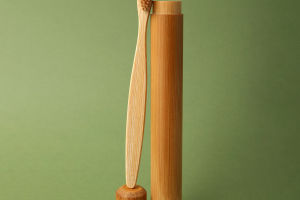In the context of increasing environmental awareness, more and more people are turning their attention to tableware made from eco-friendly materials.
Among them, wooden tableware is highly favored for its natural and environmentally friendly characteristics.
However, with a wide variety of wooden tableware available on the market, and varying qualities, understanding how to distinguish "qualified" wooden tableware has become a focus for many. This article will detail how to select "qualified" wooden tableware based on material, craftsmanship, brand reputation, and other aspects.
Material Selection
1. Purity of Raw Materials
Qualified wooden tableware should first use natural and pure wood as the raw material, such as oak, cherry wood, walnut, and others. These woods are solid in texture, with clear grain, resistant to deformation, and cracking, and do not release harmful substances during use.
2. Green and Environmental
Ensure the wood comes from legal and non-toxic sources. Checking for certifications like FSC (Forest Stewardship Council) certification can provide insight into the product's level of environmental friendliness.
3. Surface Treatment
High-quality wooden tableware should have a food-grade oil treatment on the surface. This helps prevent food penetration, extends the lifespan, and makes cleaning easier.
Craftsmanship
1. Handmade
Handmade wooden tableware often possesses artistic and textural qualities since each piece is carefully polished and processed by craftsmen. When selecting, look for products with a "handmade" label.
2. Vegetable Oil Treatment
Premium wooden tableware often undergoes treatment with vegetable oil. This not only enhances the wooden tableware's luster but also provides waterproofing and moisture resistance.
3. Edge and Corner Treatment
Check if the edges and corners of the wooden tableware are smoothed to avoid scratching hands during use and ensure safety.
Brand Reputation
1. Brand Background
Choosing well-known brands of wooden tableware can better guarantee quality. Established brands often have stricter production standards and quality control.
2. User Reviews
Before purchasing, look up consumer reviews and experiences. If a brand's products have received widespread acclaim from users, it's likely a good choice.
3. After-sales Service
Good after-sales service is also an important consideration when choosing wooden tableware. Understanding a brand's after-sales policies and guarantees can provide peace of mind after purchase.
Price and Value
1. Avoiding Extremely Low Prices
As a naturally eco-friendly product, wooden tableware tends to have higher prices, which is normal. Avoid excessively low prices to prevent purchasing low-quality products.
2. Cost-Effectiveness
Consider the quality, brand, material, and other factors to choose wooden tableware that offers a good balance of price and performance.
Use and Maintenance
1. Usage Precautions
When using wooden tableware, try to avoid direct sunlight, high temperatures, or prolonged immersion in water to avoid affecting its lifespan.
2. Regular Maintenance
Regularly use edible oil or dedicated wooden tableware maintenance oil for lubrication to maintain the wooden tableware's luster and prolong its lifespan.
3. Gentle Cleaning
When cleaning, use warm water and neutral detergent, avoiding strong acidic or alkaline cleaners to prevent damage to the surface of the wooden tableware.
In conclusion, choosing "qualified" wooden tableware requires considering multiple factors such as material, craftsmanship, brand reputation, price, and value. Only by understanding the basic characteristics of the product comprehensively can one make a wise choice, contributing to the health and environmental protection of oneself and family.


